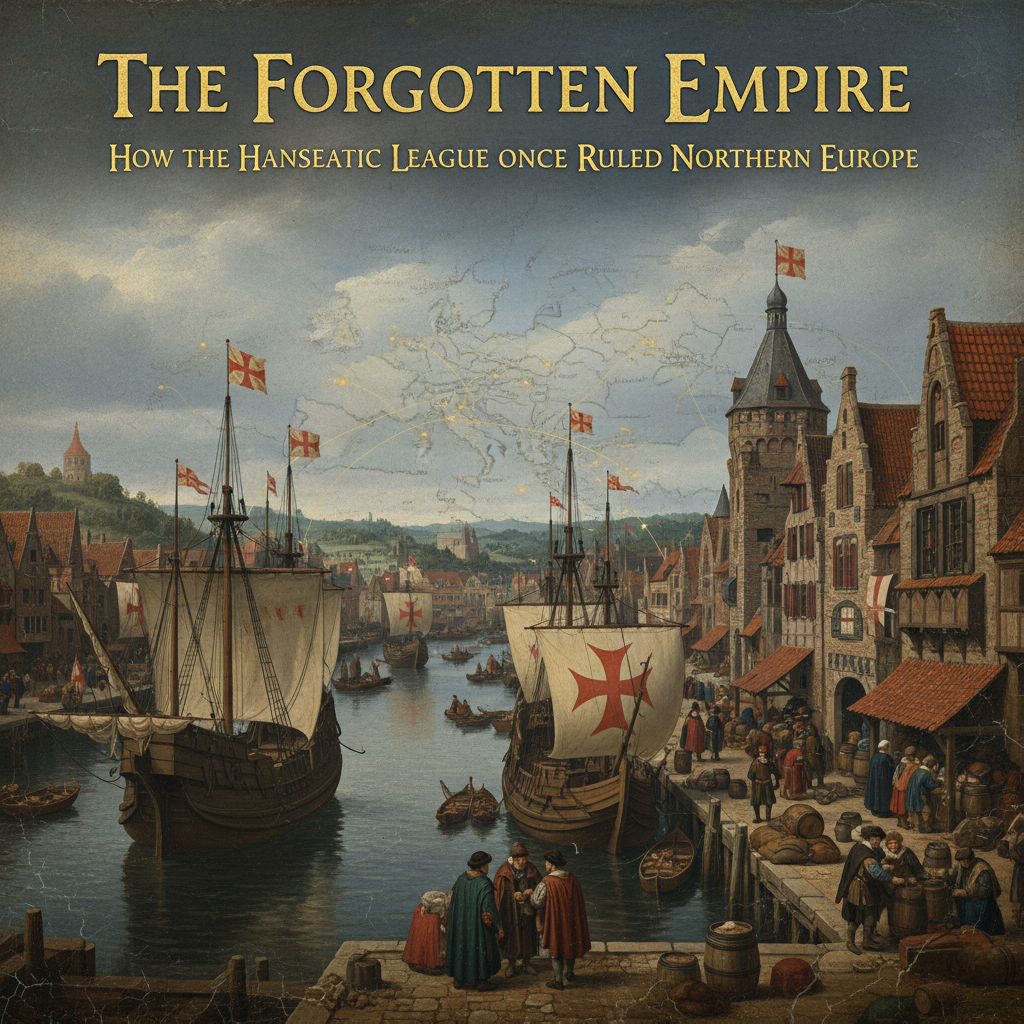The Hanseatic League represented a forgotten power in Northern Europe. Long before the emergence of contemporary nations such as Germany and Sweden, a network of cities exerted considerable influence over trade, politics, and conflicts in the region. This entity differed from traditional kingdoms. It lacked a single monarch. Instead, it operated as the Hanseatic League. For almost four hundred years, this alliance functioned as an unseen force driving the European economy.
The origins of this merchant-based empire trace back to the late twelfth century. Merchants from Lübeck in Germany sought mutual protection from pirates and exploitative local authorities. Maritime commerce carried significant risks during that era. Vessels faced frequent raids. Municipalities often imposed unjust levies on outsiders. Monarchies engaged in perpetual strife.
Merchants responded through cooperation, a strategy aligned with their interests. They established pacts with nearby centers including Hamburg, Bremen, and Danzig, which is now known as Gdańsk in Poland. These arrangements facilitated resource sharing and safeguarded commercial pathways. The alliance expanded gradually, relying on diplomatic accords rather than military expansion.
Evidence indicates that by the fourteenth century, the Hanseatic League encompassed around two hundred urban centers. These spanned modern territories in Germany, the Netherlands, Poland, the Baltic states, and portions of Scandinavia. Collectively, they monopolized exchanges in commodities like timber, fish, furs, beer, salt, and grain.
The structure of the League set it apart from conventional governance models. No emperor or hereditary dynasty presided over it. Free cities formed the core, administered by commercial leaders through consensual frameworks. Participating municipalities contributed to deliberations. Assemblies known as the Hansetag served as a medieval equivalent to a commercial assembly.
Support mechanisms proved robust. An assault on one member prompted naval and military aid from allies. Attempts by rulers to disrupt commerce invited retaliation. The League could isolate such figures economically, akin to early forms of sanctions. It even participated in armed conflicts and emerged victorious on occasion.
For a period, control extended over the North Sea and Baltic regions. Participants in those waters adhered to the League’s regulations.
Prosperity and authority peaked during the League’s zenith. Accumulated wealth surpassed that of many aristocratic families. Urban centers such as Lübeck, Hamburg, and Bergen evolved into focal points for advancements in various fields. Hanseatic traders maintained independent judicial systems, legal codes, and storage facilities abroad. Such outposts appeared in places like London, Bruges, and Novgorod.
Vessels transported more than merchandise. They disseminated linguistic elements, cultural practices, and technical knowledge beyond boundaries. In certain respects, the Hanseatic League contributed to precursors of the contemporary European Union. This organization emphasized mutual economic ties over monarchical dominance.
Decline inevitably affected even merchant empires. From the sixteenth century onward, emerging forces challenged the status quo. The Dutch, English, and Scandinavian powers developed their own maritime capabilities. Oceanic paths veered toward the Atlantic following explorations of the Americas. Baltic supremacy gradually eroded.
Discord within the alliance compounded vulnerabilities. Certain municipalities amassed disproportionate strength. Others resisted contributions to collective security. By the seventeenth century, the League diminished significantly. Its last assembly occurred in 1669, over four centuries after inception.
Vestiges of the Hanseatic League persist despite its dissolution. Numerous European municipalities, including Hamburg, Lübeck, and Bremen, retain the designation of Free Hanseatic City. Traces of autonomy, commercial traditions, and participatory governance derive from this historical confederation.
The alliance underscored commerce’s potential to eclipse royal authority. Economic exchanges, collaboration, and common objectives appeared capable of uniting territories more effectively than military endeavors.
Contemporary relevance emerges in an era dominated by international commerce and partnerships. The Hanseatic League resembles early globalization. It demonstrated that joint efforts, even among competitors, might foster enduring stability and affluence across expansive areas.
The narrative of the Hanseatic League highlights alternative sources of influence. Authority need not derive solely from military might or sovereignty. At times, it arises from maritime ventures, marketplaces, and voluntary associations among individuals.


